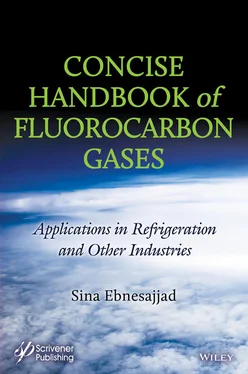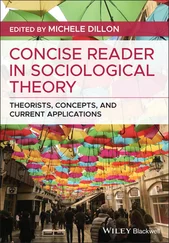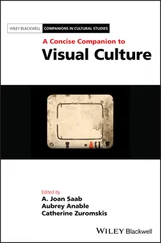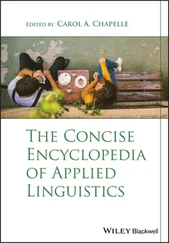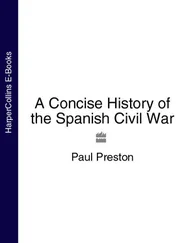
This edition first published 2021 by John Wiley & Sons, Inc., 111 River Street, Hoboken, NJ 07030, USA and Scrivener
Publishing LLC, 100 Cummings Center, Suite 541J, Beverly, MA 01915, USA
© 2021 Scrivener Publishing LLC
For more information about Scrivener publications please visit www.scrivenerpublishing.com.
All rights reserved. No part of this publication may be reproduced, stored in a retrieval system, or transmitted, in any form or by any means, electronic, mechanical, photocopying, recording, or otherwise, except as permitted by law. Advice on how to obtain permission to reuse material from this title is available at http://www.wiley.com/go/permissions.
Wiley Global Headquarters
111 River Street, Hoboken, NJ 07030, USA
For details of our global editorial offices, customer services, and more information about Wiley products visit us at www.wiley.com.
Limit of Liability/Disclaimer of Warranty
While the publisher and authors have used their best efforts in preparing this work, they make no representations or warranties with respect to the accuracy or completeness of the contents of this work and specifically disclaim all warranties, including without limitation any implied warranties of merchant- ability or fitness for a particular purpose. No warranty may be created or extended by sales representatives, written sales materials, or promotional statements for this work. The fact that an organization, website, or product is referred to in this work as a citation and/or potential source of further information does not mean that the publisher and authors endorse the information or services the organization, website, or product may provide or recommendations it may make. This work is sold with the understanding that the publisher is not engaged in rendering professional services. The advice and strategies contained herein may not be suitable for your situation. You should consult with a specialist where appropriate. Neither the publisher nor authors shall be liable for any loss of profit or any other commercial damages, including but not limited to special, incidental, consequential, or other damages. Further, readers should be aware that websites listed in this work may have changed or disappeared between when this work was written and when it is read.
Library of Congress Cataloging-in-Publication Data
ISBN 978-1-119-32297-9
Cover image: Pixabay.Com
Cover design by Russell Richardson
Set in size of 11pt and Minion Pro by Manila Typesetting Company, Makati, Philippines
Printed in the USA
10 9 8 7 6 5 4 3 2 1
I have worked in the fluoropolymers industries for the better part of four decades. During those years I have encountered fluorocarbon gases as monomers of the fluoropolymers. In time I learned about the detrimental impact of some of those gases on the ozone layer and contribution to global warming. Curiosity led me to attempt educating myself about those impacts. The facts relied on the well-known basic chemical reactions of chlorine free radicals with ozone and as such they were undeniable. Interest in the environmental impact of chlorofluorocarbons gases ignited my long apprenticeship in this field. I set a goal to learn about the topics related to commercial applications of fluorocarbons.
Today, one often hears about the ozone layer, global warming, climate change, recycling and sustainability. Some of these terms had not yet been coined at the onset. In the1970s there was little if any reported news about the ozone monitoring that had been started by the scientists from the British Antarctic Survey who began monitoring ozone in 1957. Paul Crutzen, Mario Molina and Sherwood Rowland raised concerns about the effect of man-made chemicals, especially chlorofluorocarbons, on the Ozone Layer as early as in the 1970’s, to little effect. Exception is the unilateral move by the US Environmental Protection Agency banning the production of chlorofluorocarbons in 1978.
Then came the momentous article written by Joe Farman, Brian Gardiner and Jonathan Shanklin, in the prestigious journal Nature in May 1985. The authors reported the discovery of the annual depletion of ozone above the Antarctica for the first time (Figure). The information withstood reanalysis by NASA scientists who confirmed the findings. Loss of atmospheric ozone would weaken/remove the filter for harmful ultraviolet light thus subject the entire earth and the living organisms to excess UV radiation, expected to lead to known and unknowns damages. The subject caught the attention of the public. Something had to be done.

Source : https://undsci.berkeley.edu/article/0_0_0/ozone_depletion_09
[The international community was uncharacteristically quick to act, perhaps because the seemingly sudden appearance of a “hole” in the atmosphere made for such a compelling and easily understandable story. Within two years, in direct response to the Nature article and corroborating studies, 46 nations signed the Montreal Protocol, pledging to phase out substances known to cause ozone depletion. All 197 members of the United Nations would eventually ratify the treaty…], as described by the www.History.com. Today, over 98% of the 100 ozone depleting chemicals have been phased out. A great deal of change has taken place in the decades since 1987 to not only eliminate/minimize ozone depleting substances but reduce the emissions of global warming gases.
Many treaties have followed the original Montreal Protocol and colossal numbers of scientific articles have been published. Learning about the technological changes and the state of the ozone layer is a bewildering task. An in depth understanding requires the knowledge of such a large volume of literature that it is impractical even for the practitioners in the areas of fluorocarbon gases. That was the dilemma the author faced in his quest to learn about the topics surrounding the ozone layer. There was no single book to read or refer to for learning. Not finding a source, in 2016 the author set out to write the book he wished he could buy and read: in-depth coverage of important topics yet concise to fit practical time limits. The focus of this book is placed on the commercial and practical subjects as opposed to the theoretical ones.
The outcome of the author’s efforts during nearly five years is the book before you. The contents begin at the ground level by providing an introduction to fluorocarbons, that is fluorinated small molecules and polymeric materials. The rest of the book is focused on industrial fluorocarbon, gases and liquids. The issue of ozone depletion is discussed in conjunction with the subject of most chapters to ensure clarity of the relationship of the compounds with the current rules and regulations. In the early chapters some basic topics have been covered including fluorine sources, basic reactions for fluorine entry into organic compounds and applications of fluorocarbon gases and liquids.
Emphasis has been placed on refrigeration though other applications have also been discussed. The preparation methods and properties of fluorocarbons occupy Chapters 6and 7. Chapter 8delves into the topics of ozone depletion and global warming by discussing the various treaties and changes since 1987. A reader should be able to gain a complete understanding of the current state of technology and the future directions as foreseen by experts by reading the Chapters 8and 11. Chapter 9contains a great deal of data about the industrial fluorocarbons blends. Chapter 10focuses on fluorocarbon substitutes, including non-fluorinated substances, in current use in the industry.
Читать дальше
